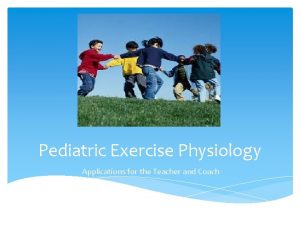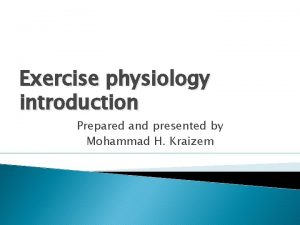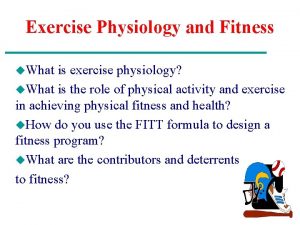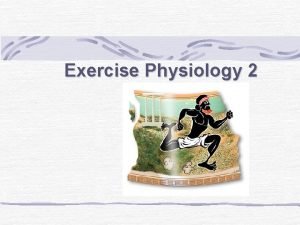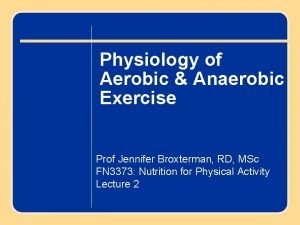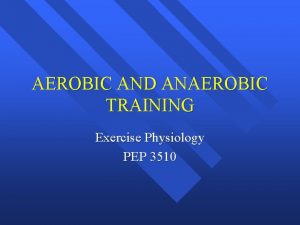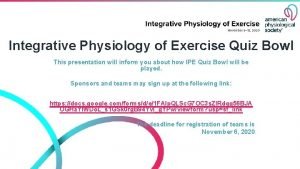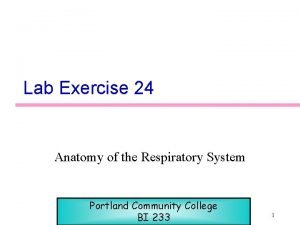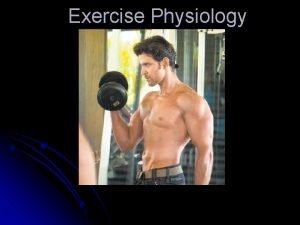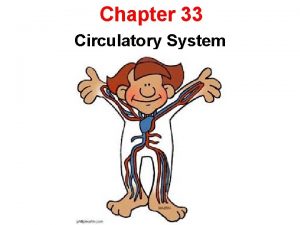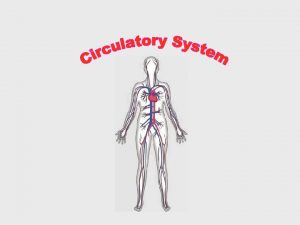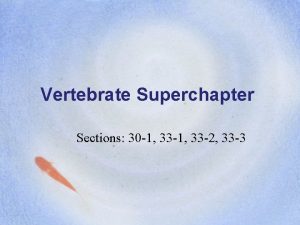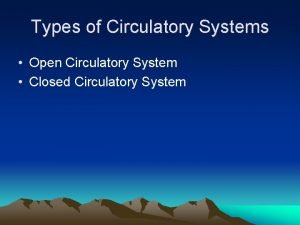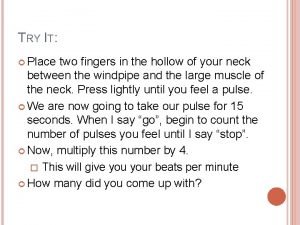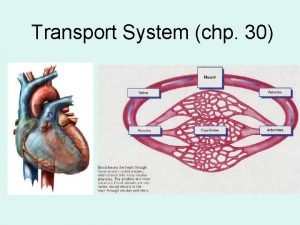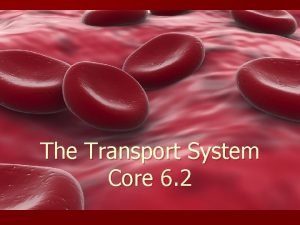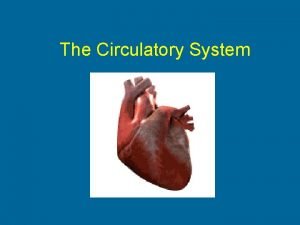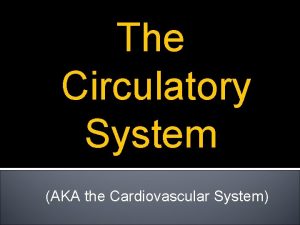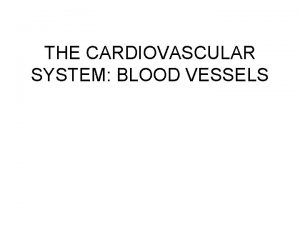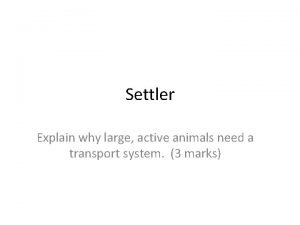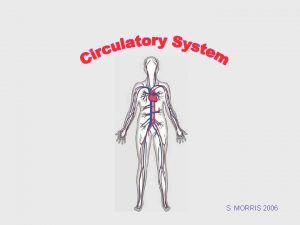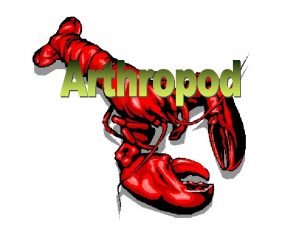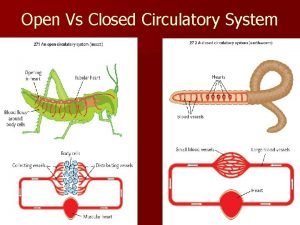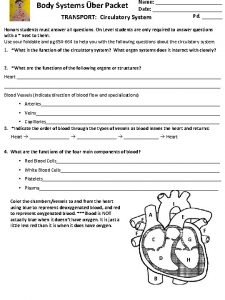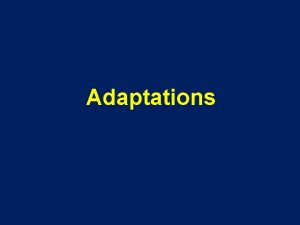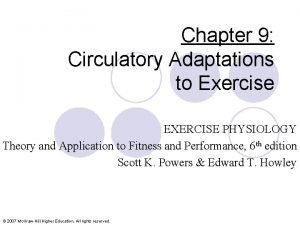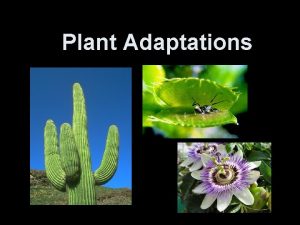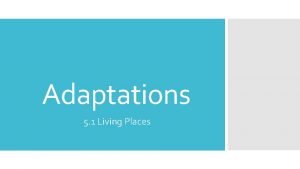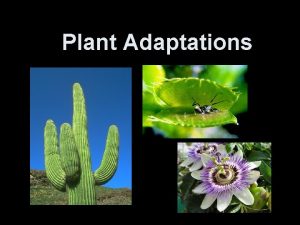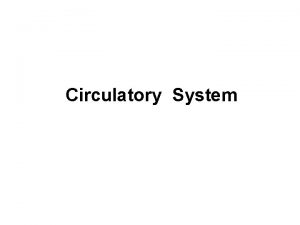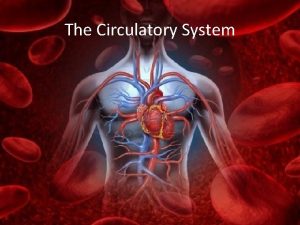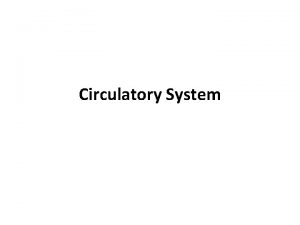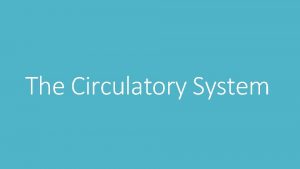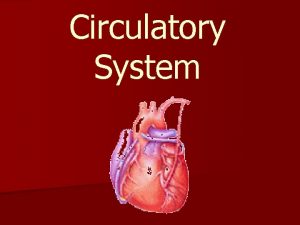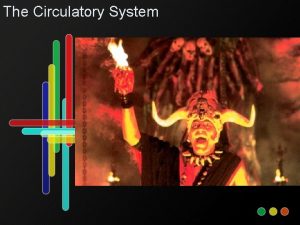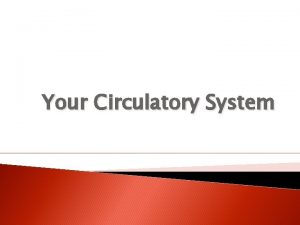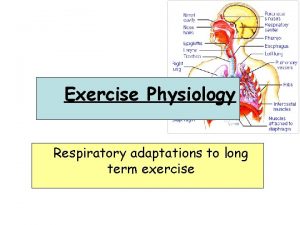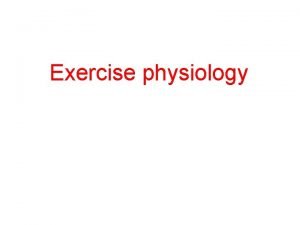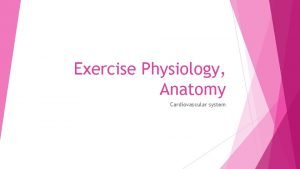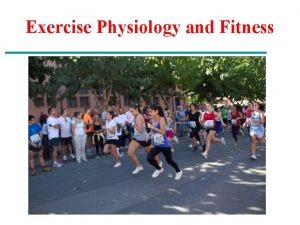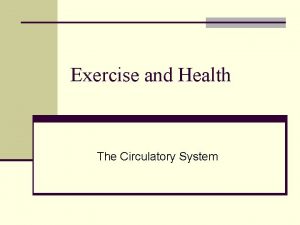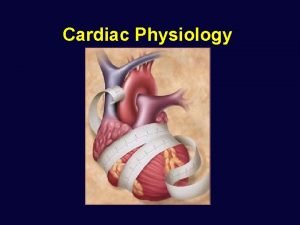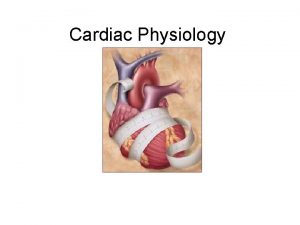Chapter 9 Circulatory Adaptations to Exercise EXERCISE PHYSIOLOGY



















































- Slides: 51

Chapter 9: Circulatory Adaptations to Exercise EXERCISE PHYSIOLOGY Theory and Application to Fitness and Performance, 6 th edition Scott K. Powers & Edward T. Howley © 2007 Mc. Graw-Hill Higher Education. All rights reserved.

Introduction One major challenge to homeostasis posed by exercise is the increased muscular demand for oxygen l During heavy exercise, oxygen demands may by 15 to 25 times l Two major adjustments of blood flow are; l ¡ ¡ l cardiac output Redistribution of blood flow A thorough understanding of the cardiovascular system is essential to exercise physiology © 2007 Mc. Graw-Hill Higher Education. All rights reserved.

Objectives Give an overview of the design and function of the circulatory system l Describe cardiac cycle & associated electrical activity recorded via electrocardiogram l Discuss the pattern of redistribution of blood flow during exercise l Outline the circulatory responses to various types of exercise l © 2007 Mc. Graw-Hill Higher Education. All rights reserved.

Objectives l Identify the factors that regulate local blood flow during exercise l List & discuss those factors responsible for regulation of stroke volume during exercise l Discuss the regulation of cardiac output during exercise © 2007 Mc. Graw-Hill Higher Education. All rights reserved.

The Cardiovascular System Purposes 1. 2. 3. © 2007 Mc. Graw-Hill Higher Education. All rights reserved.

The Circulatory System l Heart ¡ Pumps l Arteries ¡ Carry blood and arterioles blood ____ from the heart l Capillaries ¡ Exchange l Veins of _____ with tissues and venules ¡ Carry blood _____ the heart © 2007 Mc. Graw-Hill Higher Education. All rights reserved.

Structure of the Heart Fig 9. 1 © 2007 Mc. Graw-Hill Higher Education. All rights reserved.

Pulmonary and Systemic Circuits Systemic circuit l ____ side of the heart l Pumps _____ blood to the whole body via arteries l Returns ______ blood to the right heart via veins © 2007 Mc. Graw-Hill Higher Education. All rights reserved. Pulmonary circuit l ____ side of the heart l Pumps _____ blood to the ______ via pulmonary arteries l Returns ______ blood to the ____ heart via pulmonary veins

The Myocardium Fig 9. 3 © 2007 Mc. Graw-Hill Higher Education. All rights reserved.

The Cardiac Cycle Diastole Systole l ______ phase l _____ phase Fig 9. 5 © 2007 Mc. Graw-Hill Higher Education. All rights reserved.

Arterial Blood Pressure l Expressed as systolic/diastolic ¡ Normal is 120/80 mm. Hg ¡ High is 140/90 mm. Hg l Systolic pressure (top number) ¡ Pressure generated during ________ (systole) l Diastolic pressure ¡ Pressure in the arteries during _______ (diastole) © 2007 Mc. Graw-Hill Higher Education. All rights reserved.

Blood Pressure l ________ ¡ Difference between systolic and diastolic Pulse Pressure = Systolic - Diastolic l ____________ (MAP) ¡ Average pressure in the arteries MAP = ____________ © 2007 Mc. Graw-Hill Higher Education. All rights reserved.

Mean Arterial Pressure Blood pressure of 120/80 mm Hg MAP = © 2007 Mc. Graw-Hill Higher Education. All rights reserved.

Measurement of Blood Pressure © 2007 Mc. Graw-Hill Higher Education. All rights reserved. Fig 9. 7

Factors That Influence Arterial Blood Pressure Fig 9. 8 © 2007 Mc. Graw-Hill Higher Education. All rights reserved.

How is Blood Pressure Regulated? l Acute regulation ¡ Achieved l Long term regulation ¡ Function l by ___________ of the __________ They do so by control of __________ © 2007 Mc. Graw-Hill Higher Education. All rights reserved.

Electrical Activity of the Heart l Contraction of the heart depends on electrical stimulation of the myocardium l Impulse is initiated in the _____ and spreads throughout entire heart l May be recorded on an _________ (ECG) © 2007 Mc. Graw-Hill Higher Education. All rights reserved.

Conduction System of the Heart __________ Fig 9. 9 © 2007 Mc. Graw-Hill Higher Education. All rights reserved.

________ The amount of blood pumped by the heart each minute l Product of _________ Q = _____ ¡ ______ = number of beats per minute ¡ ______ = amount of blood ejected in each beat © 2007 Mc. Graw-Hill Higher Education. All rights reserved.

Regulation of Heart Rate l 2 prominent factors that influence HR l Decrease in HR 1. ___________ l Via _______ ¡ Slows HR by inhibiting _____ l Increase in HR 2. ___________ l Via cardiac _______ ¡ Increases HR by stimulating ____ © 2007 Mc. Graw-Hill Higher Education. All rights reserved.

Regulation of Stroke Volume SV at rest or during exercise is regulated by 3 variables 1. _________ (EDV) l ¡ Volume of blood in the ventricles at the end of diastole (“preload”) 2. _________ ¡ Pressure the heart must pump against to eject blood (“afterload”) 3. _____ of the ventricular contraction ¡ “Contractility” © 2007 Mc. Graw-Hill Higher Education. All rights reserved.

End-Diastolic Volume l _________ ¡ Greater preload results in stretch of ventricles and in a more forceful contraction l Affected by venous return: l What factors regulate venous return? 1. 2. 3. © 2007 Mc. Graw-Hill Higher Education. All rights reserved.

The Skeletal Muscle Pump l Rhythmic skeletal muscle contractions force blood in the extremities toward the heart l One-way valves in veins prevent backflow of blood Fig 9. 16 © 2007 Mc. Graw-Hill Higher Education. All rights reserved.

Average Aortic Pressure l Aortic pressure is ______ related to stroke volume l High afterload results in a ______ stroke volume ¡ Requires greater force generation by the myocardium to eject blood into the aorta l Reducing aortic pressure results in _______ stroke volume © 2007 Mc. Graw-Hill Higher Education. All rights reserved.

Ventricular Contractility l Increased contractility results in ____ stroke volume ¡ Circulating epinephrine and norepinephrine ¡ Direct sympathetic stimulation of heart © 2007 Mc. Graw-Hill Higher Education. All rights reserved.

Factors that Regulate Cardiac Output Parasympathetic nerves Mean arterial pressure Cardiac = Cardiac Rate x Stroke Volume Output Sympathetic nerves Fig 9. 18 © 2007 Mc. Graw-Hill Higher Education. All rights reserved. Contraction strength EDV Stretch Frank. Starling

Hemodynamics The study of the physical principles of blood flow © 2007 Mc. Graw-Hill Higher Education. All rights reserved.

Physical Characteristics of Blood l ______ ¡ Liquid portion of blood ¡ Contains ions, proteins, hormones l Cells ¡ ______ l Contain hemoglobin to carry oxygen ¡ ___________ l Important in blood clotting © 2007 Mc. Graw-Hill Higher Education. All rights reserved.

______ Percent of blood composed of cells Fig 9. 19 © 2007 Mc. Graw-Hill Higher Education. All rights reserved.

Hemodynamics Based on interrelationships between: ¡ ___________ ¡ ______ l Since large increases in P are hazardous to health – decreasing resistance is the primary factor used to achieve increases in BF during exercise with a small rise in P © 2007 Mc. Graw-Hill Higher Education. All rights reserved.

Hemodynamics: Pressure l Blood flows from ___ pressure ¡ Proportional to the difference between MAP and right atrial pressure ( P) l BF depends on P at 2 ends of vascular system l P at 2 ends of a vessel are equal = _____ © 2007 Mc. Graw-Hill Higher Education. All rights reserved.

Blood Flow Through the Systemic Circuit Fig 9. 20 © 2007 Mc. Graw-Hill Higher Education. All rights reserved.

Hemodynamics: Resistance l What factors contribute to the resistance of blood flow? 1. 2. 3. Resistance is directly proportional to these 2 factors Most important factor determining vascular resistance l A _____ change in vessel diameter can have a dramatic impact on resistance! Resistance = © 2007 Mc. Graw-Hill Higher Education. All rights reserved.

Hemodynamics: Blood Flow l ______ proportional to the pressure difference between the two ends of the system l ______ proportional to resistance Flow = © 2007 Mc. Graw-Hill Higher Education. All rights reserved.

Sources of Vascular Resistance l MAP _____ throughout the systemic circulation l Largest drop occurs across the _______ ¡ Arterioles are called “resistance vessels” © 2007 Mc. Graw-Hill Higher Education. All rights reserved.

Pressure Changes Across the Systemic Circulation Fig 9. 21 © 2007 Mc. Graw-Hill Higher Education. All rights reserved.

Oxygen Delivery During Exercise l Oxygen demand by muscles during exercise is many times greater than at rest l Increased O 2 delivery accomplished via 2 mechanisms: 1. 2. © 2007 Mc. Graw-Hill Higher Education. All rights reserved.

Changes in Cardiac Output l Cardiac output increases due to: ¡ Increased l ____ Linear increase to max Max HR = 220 - Age (years) ¡ Increased ____ l Plateau at ~40% VO 2 max l Oxygen ¡ Higher uptake by the muscle also ______ arteriovenous difference © 2007 Mc. Graw-Hill Higher Education. All rights reserved.

Changes in Cardiovascular Variables During Exercise Fig 9. 22 © 2007 Mc. Graw-Hill Higher Education. All rights reserved.

Redistribution of Blood Flow blood flow to working skeletal muscle l Splanchnic blood flow to less active organs l Muscle ¡ Liver, kidneys, GI tract © 2007 Mc. Graw-Hill Higher Education. All rights reserved.

Changes in Muscle and Splanchnic Blood Flow During Exercise Fig 9. 23 © 2007 Mc. Graw-Hill Higher Education. All rights reserved.

Increased Blood Flow to Skeletal Muscle During Exercise l What regulates blood flow to various organs during exercise? 1. 2. ¡ Blood flow increased to meet metabolic demands of tissue l ¡ This happens because of muscle vasodilation O 2 tension, CO 2 tension, p. H, nitric oxide © 2007 Mc. Graw-Hill Higher Education. All rights reserved.

Redistribution of Blood Flow During Exercise Fig 9. 24 © 2007 Mc. Graw-Hill Higher Education. All rights reserved.

Circulatory Responses to Exercise l Heart rate and blood pressure l Depend on: ¡ Type, intensity, and duration of exercise ¡ Environmental condition ¡ Emotional influence © 2007 Mc. Graw-Hill Higher Education. All rights reserved.

Transition From Rest Exercise and Exercise Recovery l Rapid increase in HR, SV, cardiac output l Plateau in submaximal (below lactate threshold) exercise l Recovery depends on: ¡ Duration and intensity of exercise ¡ Training state of subject © 2007 Mc. Graw-Hill Higher Education. All rights reserved.

Incremental Exercise l Heart rate and cardiac output ¡ Increases linearly with increasing work rate ¡ Reaches plateau at 100% VO 2 max l Stroke volume l Systolic blood pressure ¡ Increases with increasing work rate l Double product – also called______ ¡ Increases linearly with exercise intensity ¡ Indicates the work of the heart Double product = © 2007 Mc. Graw-Hill Higher Education. All rights reserved.

Arm vs. Leg Exercise l At the same oxygen uptake arm work results in higher: ¡ _______ l ¡ Due to higher _______ stimulation _______ l Due to _______ of large inactive muscle mass . © 2007 Mc. Graw-Hill Higher Education. All rights reserved.

Heart Rate and Blood Pressure During Arm and Leg Exercise If these 2 factors increase so will ________ © 2007 Mc. Graw-Hill Higher Education. All rights reserved. Fig 9. 26

Prolonged Exercise l Cardiac output is maintained ¡ ¡ l Gradual decrease in _____ Gradual increase in _____ Cardiovascular drift ¡ What is the drift due to? 1. 2. . © 2007 Mc. Graw-Hill Higher Education. All rights reserved.

HR, SV, and Q During Prolonged Exercise Fig 9. 27 © 2007 Mc. Graw-Hill Higher Education. All rights reserved.

Cardiovascular Adjustments to Exercise Fig 9. 23 © 2007 Mc. Graw-Hill Higher Education. All rights reserved.
 Pediatric exercise physiology
Pediatric exercise physiology Meaning of exercise physiology
Meaning of exercise physiology Wolters kluwer
Wolters kluwer Isotonic exercise physiology
Isotonic exercise physiology Isometric exercise physiology
Isometric exercise physiology Exercise physiology mascot
Exercise physiology mascot Anaerobic exercise physiology
Anaerobic exercise physiology Pep 3510a
Pep 3510a Physiology of sport and exercise 5th edition
Physiology of sport and exercise 5th edition Exercise physiology quiz
Exercise physiology quiz Trachea
Trachea Co = map/tpr
Co = map/tpr Chapter 34 circulation in humans concept mapping answer key
Chapter 34 circulation in humans concept mapping answer key Chapter 33 circulatory and respiratory systems
Chapter 33 circulatory and respiratory systems Capillary bed
Capillary bed The central sulcus divides which two lobes? (figure 14-13)
The central sulcus divides which two lobes? (figure 14-13) Chapter 1 introduction to human anatomy and physiology
Chapter 1 introduction to human anatomy and physiology Anatomy and physiology chapter 8 special senses
Anatomy and physiology chapter 8 special senses Chapter 13 anatomy and physiology of pregnancy
Chapter 13 anatomy and physiology of pregnancy Chapter 2 basic chemistry anatomy and physiology
Chapter 2 basic chemistry anatomy and physiology Chapter 7 anatomy and physiology
Chapter 7 anatomy and physiology Anatomy and physiology coloring workbook figure 14-1
Anatomy and physiology coloring workbook figure 14-1 Chapter 10 blood anatomy and physiology
Chapter 10 blood anatomy and physiology Anatomy and physiology chapter 15
Anatomy and physiology chapter 15 Anatomy and physiology chapter 1
Anatomy and physiology chapter 1 Holes anatomy and physiology chapter 1
Holes anatomy and physiology chapter 1 Anatomy and physiology chapter 15
Anatomy and physiology chapter 15 Chapter 1 introduction to human anatomy and physiology
Chapter 1 introduction to human anatomy and physiology Chapter 2 human reproductive anatomy and physiology
Chapter 2 human reproductive anatomy and physiology Anterior surface of scapula
Anterior surface of scapula Chapter 6 general anatomy and physiology
Chapter 6 general anatomy and physiology Olecranal region
Olecranal region Circulatory system steps in order
Circulatory system steps in order Superchp
Superchp Heart fish
Heart fish Does a clam have an open or closed circulatory system
Does a clam have an open or closed circulatory system Horse heart
Horse heart Veinioles
Veinioles Closed circulatory system
Closed circulatory system Jobs of circulatory system
Jobs of circulatory system 3 main parts of circulatory system
3 main parts of circulatory system Blood flow chart through the body
Blood flow chart through the body Tiny air sacs at the end of the bronchioles
Tiny air sacs at the end of the bronchioles Double circulatory system
Double circulatory system How circulatory system work
How circulatory system work What makes up the cardiovascular system
What makes up the cardiovascular system The actual exchange of gases occurs at the site of the
The actual exchange of gases occurs at the site of the Single circulation and double circulation
Single circulation and double circulation Nervous system of arthropods
Nervous system of arthropods Arthropoda phylogeny
Arthropoda phylogeny Arteries and veins difference
Arteries and veins difference Circulatory system foldable
Circulatory system foldable
